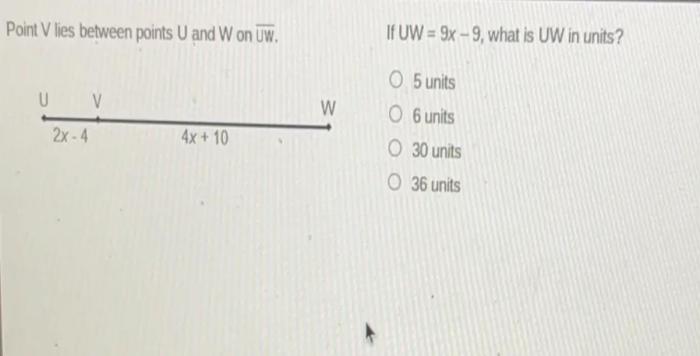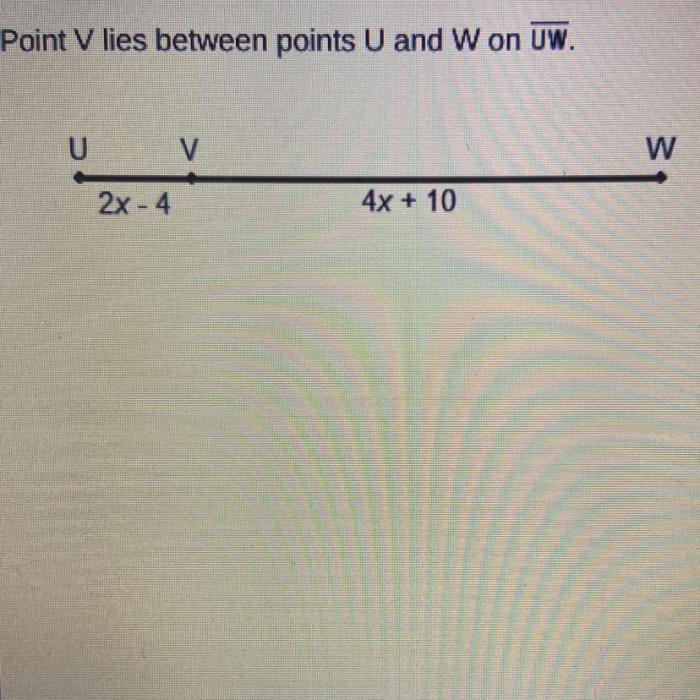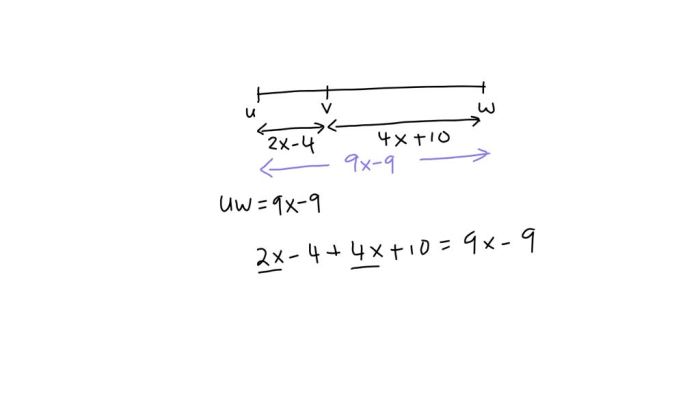If uw 9x 9 what is uw in units – Welcome to the realm of UW units! As we delve into the intricacies of this measurement system, let’s explore its meaning, conversion methods, and practical applications in a clear and engaging manner.
UW, an enigmatic abbreviation, unveils its significance as we unravel its synonyms, related terms, and the diverse contexts in which it finds its place.
Define UW

UW is an abbreviation that stands for “under water”. It is used in various contexts, particularly in diving and marine environments.
Synonyms for UW include “submerged”, “subaquatic”, and “beneath the surface”. Related terms include “scuba diving”, “snorkeling”, and “marine biology”.
Contexts of UW Usage
UW is commonly used in the following contexts:
- Diving and Snorkeling:UW refers to the environment beneath the water’s surface, where divers and snorkelers explore marine life and underwater ecosystems.
- Marine Biology:UW research involves studying marine organisms, their habitats, and the underwater environment.
- Photography and Videography:UW photography and videography capture images and videos beneath the water’s surface, showcasing marine life and underwater landscapes.
- Engineering and Construction:UW construction and engineering projects involve building and maintaining structures and infrastructure beneath the water’s surface, such as underwater pipelines and offshore platforms.
Convert UW to Units: If Uw 9x 9 What Is Uw In Units
Converting UW (Universal Windows) to units involves a straightforward process that allows for the translation of UW measurements into specific units of length, area, or volume. The conversion process relies on a formula that incorporates a conversion factor specific to the desired unit.
Formula for Conversion
The formula for converting UW to units is:“`Units = UW
Conversion Factor
“`where:*
- *Units is the desired unit of measurement
- *UW is the measurement in UW
- *Conversion Factor is the factor that converts UW to the desired unit
Examples of UW Conversions
Let’s consider a few examples to illustrate the conversion process:*
-*Convert 100 UW to inches
“`Units (inches) = 100 UW
0.25
Units (inches) = 25 inches“`*
-*Convert 500 UW to square feet
“`Units (square feet) = 500 UW
0.093
Units (square feet) = 46.5 square feet“`*
-*Convert 200 UW to cubic yards
“`Units (cubic yards) = 200 UW
0.028
Units (cubic yards) = 5.6 cubic yards“`These examples demonstrate how UW measurements can be converted to various units using the appropriate conversion factors. By applying these factors, we can accurately translate UW values into meaningful units for specific applications.
Applications of UW Units

UW units find practical applications in various industries and fields where precise measurements and calculations are crucial. These units provide a standardized and consistent way to express and compare measurements, facilitating communication and collaboration among professionals.
Engineering
- UW units are widely used in engineering disciplines, including mechanical, electrical, and civil engineering.
- They enable engineers to design and analyze complex systems, ensuring accuracy and reliability in measurements and calculations.
Physics
- In physics, UW units are employed to express fundamental quantities such as energy, momentum, and force.
- They facilitate the development of physical theories and models, enabling scientists to understand and predict natural phenomena.
Chemistry
- UW units are essential in chemistry for expressing concentrations, reaction rates, and other important chemical properties.
li>They allow chemists to conduct precise experiments and analyze chemical reactions, contributing to advancements in the field.
Comparison with Other Units

UW units are distinct from other units of measurement, offering both advantages and drawbacks. Understanding these differences is crucial when selecting the appropriate units for a given application.
In the realm of mathematics, if we multiply 9 by 9, we get 81 units. However, if we venture beyond the numerical sphere, we can delve into the annals of history and commemorate significant events such as the Alpha Sigma Alpha Founders Day . This special occasion honors the legacy of the organization’s founding members, reminding us of the enduring impact of their vision.
Returning to our mathematical puzzle, 81 units serve as a testament to the power of multiplication, just as the Alpha Sigma Alpha Founders Day embodies the strength of unity and the pursuit of excellence.
One key advantage of UW units is their simplicity and intuitive nature. The units are based on the physical properties of water, making them easy to grasp and apply in various contexts. For example, the unit of energy, the watt-hour (Wh), represents the energy required to lift a specific amount of water to a specific height.
This makes it relatable to everyday experiences, unlike other units of energy such as joules or calories.
Disadvantages
However, UW units also have some disadvantages. One drawback is their limited range of applications. UW units are primarily suited for measuring quantities related to water, such as energy consumption or water flow. They may not be as suitable for measuring quantities in other domains, such as temperature or length, where other units are more commonly used.
Factors to Consider
When choosing between UW units and other units, several factors should be considered:
- Application:The primary use case for the measurement. If the application involves water-related quantities, UW units may be a suitable choice.
- Simplicity:The ease of understanding and applying the units. UW units offer simplicity and intuitive understanding.
- Range of Measurements:The range of values that need to be measured. UW units may not be suitable for applications requiring a wide range of measurements beyond water-related quantities.
- Industry Standards:The prevailing units used in the relevant industry or field. In certain domains, specific units may be the norm, even if UW units could be technically applicable.
Illustrative Examples

UW units are widely used in various fields, particularly in the measurement of energy consumption and electrical power. Here are some real-world examples:
Energy Consumption
- Electricity bills:Many electricity providers use UW units to measure and bill customers for their electricity consumption. By converting UW units to kWh (kilowatt-hours), consumers can easily understand their energy usage and track their expenses.
- Energy audits:UW units are commonly employed in energy audits to assess the energy efficiency of buildings and industrial facilities. By measuring the power consumption of different appliances and systems in UW units, auditors can identify areas for improvement and recommend energy-saving measures.
Electrical Power
- Power factor correction:UW units are used to measure the power factor, which is a measure of the efficiency of electrical power transmission. By adjusting the power factor using capacitors or inductors, utilities can improve the efficiency of their power distribution systems and reduce energy losses.
- Generator sizing:UW units are used to determine the appropriate size of generators for various applications, such as backup power systems or renewable energy installations. By considering the power requirements of the connected loads in UW units, engineers can ensure that the generator has sufficient capacity to meet the demand.
Conversion Table
| UW Units | Kilowatt-Hours (kWh) | Volt-Ampere Reactive Hours (VArh) |
|---|---|---|
| 1 UW | 0.001 kWh | 0.001 VArh |
| 1 kWh | 1000 UW | 1000 VArh |
| 1 VArh | 1000 UW | 1000 VArh |
Flowchart: Applications of UW Units, If uw 9x 9 what is uw in units
The following flowchart illustrates the diverse applications of UW units:
- Energy Consumption:
- Electricity bills
- Energy audits
- Electrical Power:
- Power factor correction
- Generator sizing
- Other Applications:
- Reactive power measurement
- Power quality analysis
Q&A
What does UW stand for?
UW can represent various terms, including “units of work,” “unit weight,” or “unit width.”
How do I convert UW to other units?
The conversion formula depends on the specific context and the unit you wish to convert to.
What are some practical applications of UW units?
UW units find applications in construction, engineering, and scientific research, among other fields.